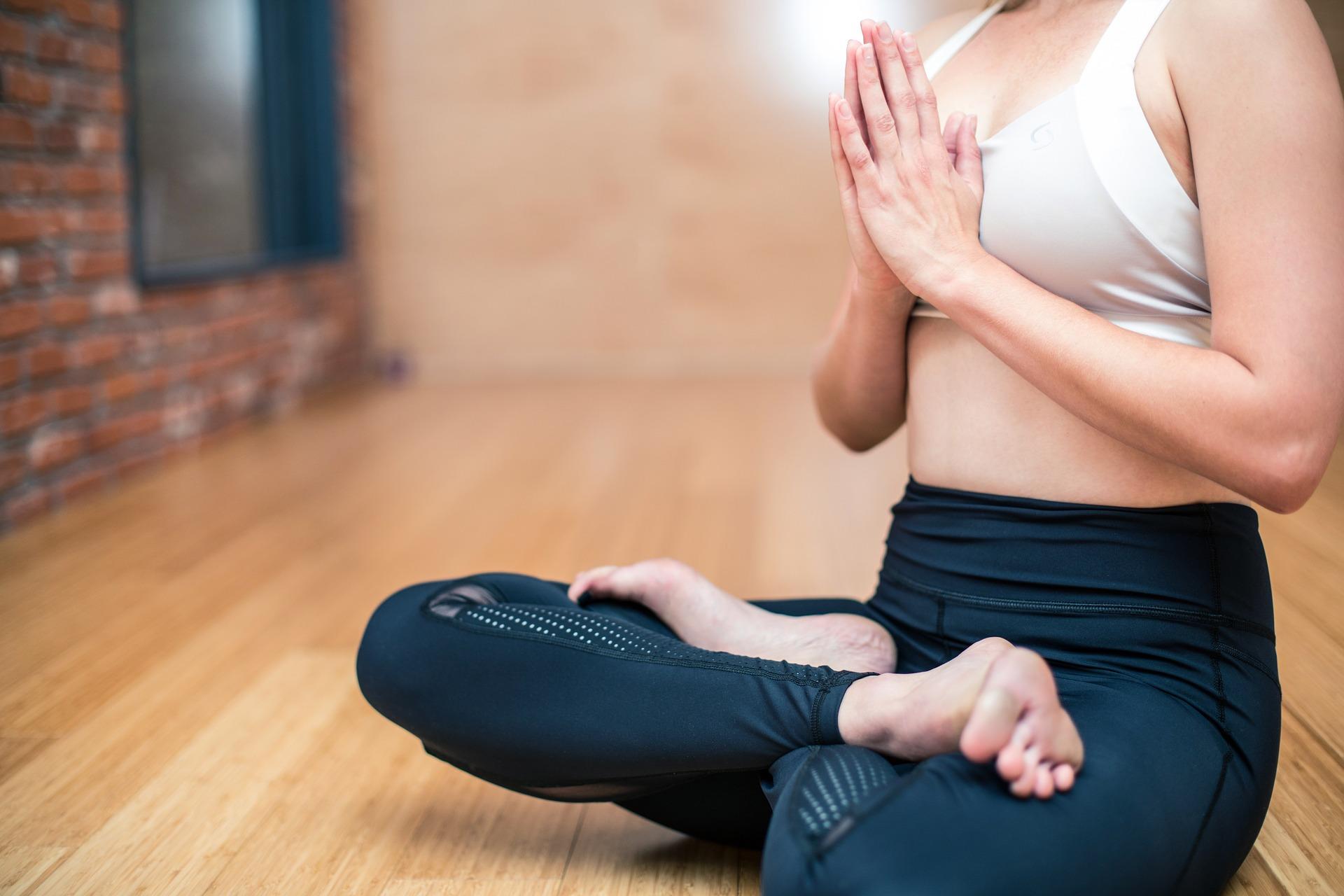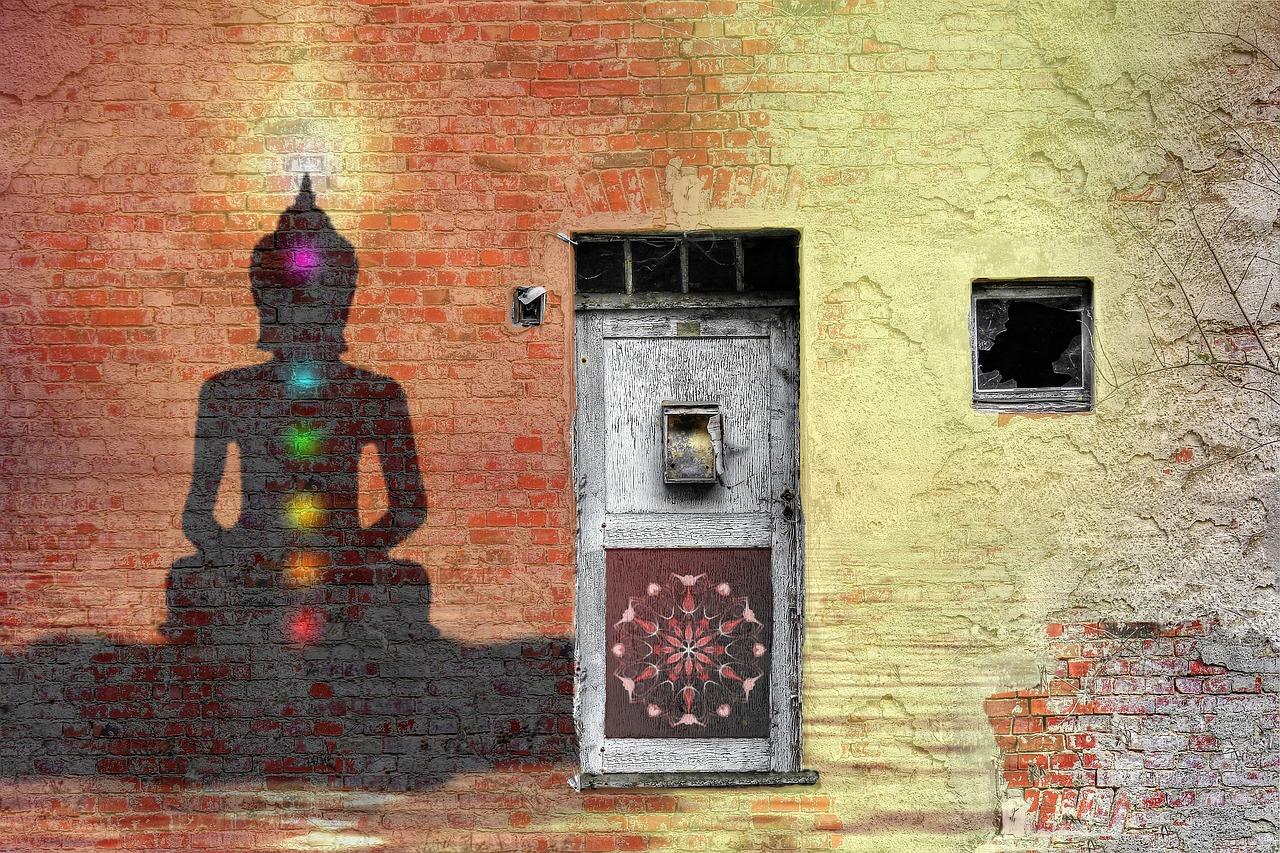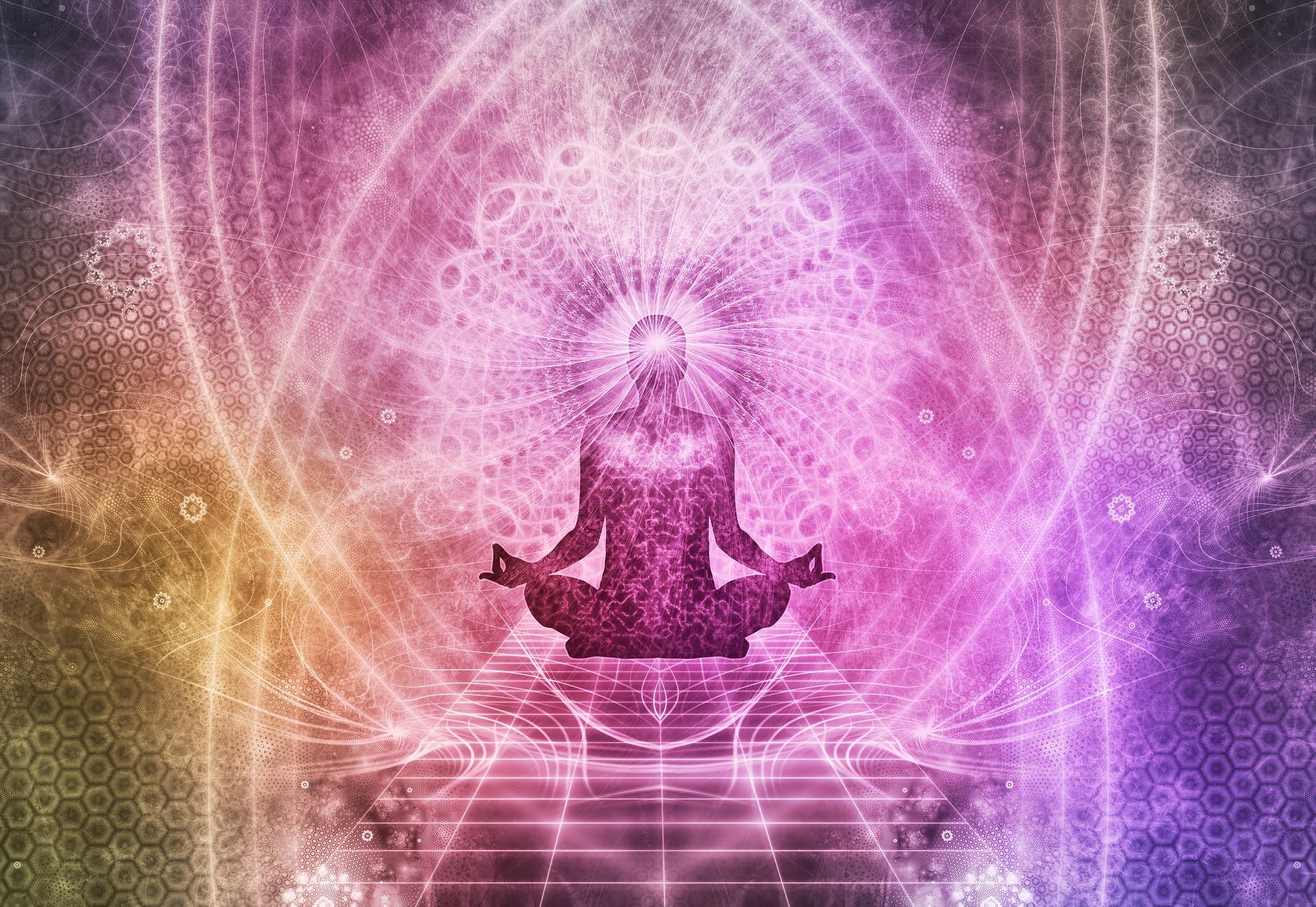“When you touch the celestial in your heart, you will realize that the beauty of your soul is so pure, so vast and so devastating that you have no option but to merge with it. You have no option but to feel the rhythm of the universe in the rhythm of your heart.” - Amit Ray
If you want to open your chakras, join hundreds of thousands of other Britons in doing yoga. Chakra is a Sanskrit word for wheel or circle. In yoga, chakras are the energy centers of the body. There are seven main ones and thousands of secondary ones.
In this article, we’ll be looking at chakras, what they do, and how you can deepen your understanding of them through yoga.

What Is a Chakra?
Chakras are energy centers within the body, originating from ancient Indian spiritual traditions like yoga and Hinduism. The term "chakra" translates to "wheel" or "disk" in Sanskrit. These are believed to be swirling energy points or nodes that correspond to various aspects of our physical, mental, and spiritual well-being.
There are typically 7 main chakras aligned along the spine, each associated with specific colours, elements, sounds, and aspects of consciousness. They're thought to be interconnected and influence different emotions and organs in the body. Practices like meditation, yoga, and energy work aim to balance and align these chakras to promote overall health and harmony.

Just like the earth’s magnetic field, the energy enters via the bottom of the body, passes upwards through the body, leaves the top of the body, and descends around it. The seven main chakras are located in the spinal column, allowing energy to circulate by filling each chakra and connected vessels.
According to the principles of yoga, perfectly opening your chakras will lead to physical, emotional, psychic, and spiritual fulfilment. A chakra that’s too open or too closed can break the connection with your astral body. Energy will circulate less or not at all, which is said to lead to issues with the associated organs.
Chakras cannot be fully closed unless you’re dead.
Find out more about why you should do yoga.
What Are the Seven Main Chakras?
The seven main chakras are believed to be energy centers within the body, according to certain Eastern spiritual and healing traditions.
What Do the 7 Chakras Mean?
The concept of chakras originates from ancient Indian spiritual traditions and refers to seven energy centers within the body. Each chakra is believed to be associated with specific physical, emotional, and spiritual aspects of a person:
They run along the spine, from the base to the crown of the head, and each chakra is associated with specific physical, emotional, and spiritual aspects:
- Root Chakra (Muladhara): Located at the base of the spine, it represents stability, security, and basic needs.
- Sacral Chakra (Swadhisthana): Positioned in the lower abdomen, it relates to creativity, sensuality, and emotions.
- Solar Plexus Chakra (Manipura): Situated in the upper abdomen, it influences personal power, confidence, and self-esteem.
- Heart Chakra (Anahata): Found in the center of the chest, it governs love, compassion, and relationships.
- Throat Chakra (Vishuddha): Located at the throat, it's associated with communication, expression, and authenticity.
- Third Eye Chakra (Ajna): Positioned between the eyebrows, it's linked to intuition, imagination, and insight.
- Crown Chakra (Sahasrara): At the top of the head, it represents spirituality, consciousness, and connection to the universe.
Each chakra is believed to influence various aspects of our physical, mental, and emotional well-being.

The First Chakra: The Root Chakra or Muladhara
The Root Chakra, also known as Muladhara in Sanskrit, is the first of the seven main chakras in the body according to Hindu and yogic traditions.
Located at the base of the spine, it's associated with the color red and represents our foundation and sense of security, stability, and basic needs.
This chakra governs our primal instincts, survival, and the feeling of being grounded. When balanced, it fosters a sense of safety, confidence, and stability. Various practices like meditation, yoga, specific exercises, and mindfulness techniques are used to balance and activate this chakra. Imbalances may manifest as anxiety, fear, insecurity, or issues related to physical health and safety. Balancing techniques often involve grounding exercises, affirmations, and engaging in activities that reconnect an individual to the present moment and their surroundings.
When it’s balanced, it gives us vitality, feeling, well-being, willpower, and self-confidence. If overdeveloped, it can lead to excessive physical and material pleasure. If underdeveloped, it leads to a lack of combativeness and dynamism.
The mantra Lam and the note C resonate with this chakra.
The Second Chakra: The Sacral Chakra or Svadhishthana
Just above the first chakra is the sacral chakra, which represents sexual energy and our relationships with others. It’s associated with organs such as the ovaries, testicles, kidneys, bladder, and the renal system.
It’s represented by the colour orange and is associated with a variety of emotions. When it’s unbalanced, it can lead to aggression and an overactive sex drive if overdeveloped. If underdeveloped, it can lead to shyness or a decreased libido.
In yoga, the mantra Vam and the note D are used to resonate with it.
Find out more about how yoga can balance your chakras.
The Third Chakra: The Solar Plexus Chakra or Manipura
The solar plexus chakra (Manipura) is located a couple of fingers above your belly button. It’s home to non-digested emotions like bitterness towards others. It’s associated with the digestive system, liver, spleen, stomach, and gall bladder.
Represented by the colour yellow, it can bring you spontaneity, joy, and help you finish projects if it’s balanced. If overdeveloped, it’s associated with a desire to be in control or always right. If underdeveloped, it leads to a lack of combativeness and dynamism.
In yoga, the mantra Ram and the note E are used to make it resonate.
The Fourth Chakra: the Heart Chakra or Anahata
Anahata is located in the middle of your chest and is associated with the heart, lungs, and immune system. It’s the centre of feelings of love, empathy, and our relations with others. It’s the connection between the top and bottom of the body, between our emotions and our body.
Represented by the colour green, it allows you to be open and friendly when balanced. When unbalanced, it can lead to fears of interacting with others or feelings of superiority.
To resonate with the heart chakra, use the mantra Yam and the note F.
Find out about yoga classes near me here.
The Fifth Chakra: The Throat Chakra or Vishuddha
The blue chakra is located at your throat and is associated with the thyroid, larynx, vocal cords, ears, and nose. It’s the center of communication, listening, and creativity. It allows you to express your personality.
When balanced, it allows you to act confidently. If it’s unbalanced, it can lead to shyness and inarticulacy or talking too much and a lack of sincerity.
In yoga, you use the mantra Ham and the note G to resonate with the fifth chakra.
The Sixth Chakra: The Guru Chakra or Ajna
The guru chakra is also known as the third-eye chakra. It’s located on your forehead between your eyebrows and is associated with your face, eyes, sinuses, and brain. It’s the centre of your mental strength, intellect, and imagination and is responsible for decision-making and consciousness.
When balanced, it provides you with better intuition. When unbalanced, it can lead to distrust or a lack of conscience. It’s represented by the colour indigo.
The mantra Om and the note A are used to resonate with the guru chakra in yoga.
Check out the best yoga classes near me on Superprof.
The Seventh Chakra: The Crown Chakra or Sahasrara
The crown chakra is located on the top of the head under the crown of your head. It’s associated with your connection to the universe and the divine. It acts upon your brain and cerebral cortex.
It’s represented by the colour purple and when balanced, allows you access to your unconscious and subconscious mind. When unbalanced, it can lead to scepticism, frustration, and indecision.
You can resonate with the seventh chakra by using the mantra Ham and the note B.
Find out the best yoga poses for each chakra.
What Are Nadis in Yoga?
Nadis, in the context of yoga philosophy, are subtle energy channels that are believed to exist within the human body. They are part of the subtle energy system, along with chakras, and are often described as pathways through which prana (life force or vital energy) flows.
While there isn't tangible scientific evidence for their existence, nadis are considered essential in various yogic practices and are said to number in the thousands, with three main nadis being the Ida, Pingala, and Sushumna. These channels are associated with different aspects of our physical, mental, and spiritual well-being, and practices like pranayama (breathing exercises) and yoga aim to balance and activate these nadis to promote overall health and vitality.

The Sushumna Nadi
The Sushumna Nadi is a significant concept in yogic and spiritual traditions, particularly within the practice of Kundalini yoga. In Hindu philosophy, a Nadi refers to channels through which energy flows in the subtle body. The Sushumna Nadi is considered the central channel among the three primary Nadis, the other two being Ida and Pingala.
Sushumna is believed to run along the spinal column, starting from the base of the spine (the Muladhara chakra) and extending upward through the center of the spine, passing through various energy centers or chakras, including the Svadhishthana, Manipura, Anahata, Vishuddha, and Ajna chakras, ultimately reaching the crown of the head (the Sahasrara chakra).
In yogic practices, the awakening of Kundalini energy is said to occur within the Sushumna Nadi. Kundalini is often depicted as a coiled serpent resting at the base of the spine, and through various techniques like meditation, breathing exercises (pranayama), and yoga postures (asanas), practitioners aim to awaken this dormant energy and guide it upwards through the Sushumna to attain higher states of consciousness and spiritual awakening.
The balanced flow of energy through the Sushumna Nadi is believed to lead to a state of harmony and enlightenment. However, working with Kundalini energy and the Sushumna Nadi should be approached with caution and under the guidance of experienced teachers due to its powerful nature and potential effects on an individual's physical, mental, and spiritual well-being.
Become a yogi and learn how to unblock your chakra through yoga classes near me on Superprof.
The Ida Nadi
This begins at the left of the first chakra and ends at the left nostril. The Ida Nadi is associated with lunar energy and calm.
The Ida Nadi is one of the three main energy channels in the subtle body according to yoga and Ayurveda. In Sanskrit, "nadi" translates to "flow" or "tube." The Ida Nadi runs along the left side of the spinal cord and is associated with feminine or cooling energy, often linked to the moon, intuition, and calmness. It's said to control the functions of the parasympathetic nervous system, influencing relaxation and receptivity.
In the practice of yoga and meditation, balancing the Ida Nadi alongside its counterpart, the Pingala Nadi (which runs along the right side and is associated with masculine or heating energy), aims to harmonize the body and mind, facilitating a state of equilibrium and well-being.
The Pingala Nadi
The opposite of the Ida Nadi, the Pingala Nadi starts at the right of the first chakra and ends at the right nostril. It’s associated with solar energy and heating.
The two latter Nadis intertwine along the spinal column and meet at the chakras.
The opening of chakras and the purification of Nadis allow prana (life force energy) to effectively circulate throughout the body. Yoga exercises and pranayamas allow you to balance your energy and Nadis.
Remember, everyone's journey to unblocking chakras is unique, so it's essential to find what resonates best with you. Always approach these practices with an open mind and respect for your body's signals.
How To Unblock Chakras?
Unblocking chakras often involves practices focused on energy centers in the body. Here are some methods commonly used to unblock chakras:
Meditation
Concentrating on each chakra, visualizing its color, and using specific mantras associated with each chakra can help balance them.
Yoga
Practicing yoga poses that target specific chakras can aid in releasing blocked energy.
Breathing exercises
Controlled breathing techniques, like pranayama, can help in clearing blockages and balancing chakras.
Use of Crystals
Some believe that certain crystals or gemstones when placed on specific chakras, can help clear blockages and restore balance.
Sound therapy
Listening to specific frequencies or using sound bowls/tuning forks associated with each chakra can facilitate their balance.
Reiki or Energy Healing
Practices like Reiki involve the channeling of energy to remove blockages and restore balance to the chakras.
Aromatherapy
Using essential oils associated with each chakra during meditation or massage can assist in balancing them.
Learning about chakras and having faith in them is usually the first step to understanding how Chakras work for human beings. Ensure you respect and understand your limitations of the mind and the human body before you dive into the world of chakras.
Résumer avec l'IA :
















